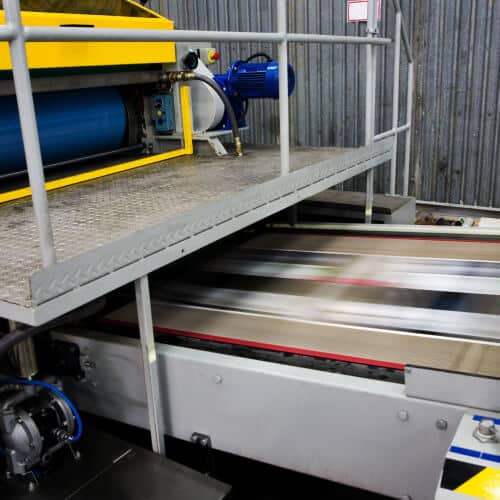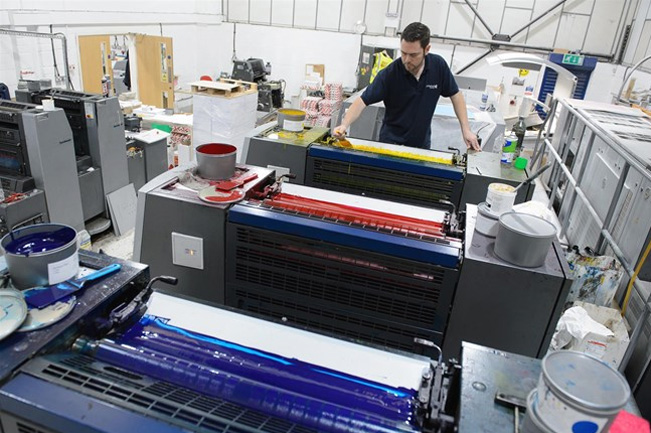litho printing Techniques Used by Expert Print Shops
litho printing Techniques Used by Expert Print Shops
Blog Article
A Comprehensive Overview to Understanding Litho Printing Methods
The world of litho printing, a method originating from the late 18th century, is an interesting blend of background, scientific research, innovation and art. Keep with us as we journey into the fascinating world of litho printing.
The Historic Evolution of Litho Printing
The historical trajectory of litho printing, a pivotal advancement in the world of communication, is a captivating story of human ingenuity. The procedure advanced with the development of the rotary press, which substantially raised efficiency. Each phase of litho printing's evolution showcases humankind's ruthless quest of efficiency and top quality in visual interaction.
Translating the Scientific Research Behind Litho Printing Inks
Moving ahead in the exploration of litho printing strategies, the focus currently shifts to the science behind litho printing inks. The make-up of these inks, their drying out procedure, and color mixing techniques form the foundation of this complex art type. Recognizing these aspects is crucial to grasping the craft and accomplishing the desired print results.
Make-up of Litho Inks
In lithographic printing, the basic duty of litho inks can not be overstated. The make-up of litho inks differs depending on its function, however usually, they include two major elements - pigments and lorries. Pigments, the color-providing aspects, are finely ground bits put on hold in the car, a liquid that brings the pigment onto the printing surface area. The lorry is a complex blend of oils, solvents, and materials, which affect the ink's drying out time, adhesion, and gloss. Additionally, various additives are present to enhance specific homes like circulation, drying, and resistance to ecological results. Each component plays an important component in the final print's quality, making the precise formula of litho inks a detailed scientific research.
Ink Drying Process
From the composition of litho inks, attention turns to the fascinating process of ink drying out. The drying out procedure is crucial, as it influences the last print's top quality and durability. 2 primary techniques are utilized in litho printing: oxidative drying and absorption. Oxidative drying includes the ink responding with oxygen in the air to create a difficult, completely dry film. This technique offers a durable coating, but can be slower compared to absorption. Absorption, on the other hand, entails the ink leaking right into the paper fibers, which is a quicker process yet can bring about less lively colors. The option in between these methods depends on aspects such as print rate demands, the paper type used, and the wanted finish.
Shade Mixing Methods
While the drying out process plays an essential function in litho printing, the science of color blending methods holds equal significance. The science behind litho printing inks additionally takes into account the transparency of the ink, which impacts exactly how shades overlay and mix.
The Art and Layout Components in Litho Printing
Litho printing breathes life right into art and design through its special aspects. Litho printing suits a range of colors, enabling artists to create vibrant and vivid prints. This mix of precision and flexibility makes litho printing a preferred choice for numerous musicians and developers.
Modern Applications of Litho Printing Methods
Litho printing techniques have located extensive use in the modern-day industrial sector. Its impact and relevance continue to expand click over here now with the arrival of new developments and innovations in the area. This section will check out these modern applications and the transformative role they play in the printing industry.
Business Litho Printing Uses
In today's electronic age, one could question the importance of standard printing approaches. Yet, litho printing stays an important part of the commercial sector. High-volume printing tasks, such as the manufacturing of publications, papers, and product packaging, rely upon litho printing for its ability to supply superior image high quality and cost performance. The procedure, which entails moving an inked photo from a plate onto a rubber blanket and after that to the printing surface, supplies unmatched consistency. This makes it suitable for jobs needing a large print run. Litho printing also offers a broad color range, above that of electronic printing. This makes it the best selection for projects that require dynamic, top notch shade reproduction.
Advancements in Litho Printing
Pressing the borders of typical techniques, modern developments have fueled a host of advancements in litho printing. One popular growth is electronic litho printing, which integrates the merits of digital technology with litho's high-grade outcome. These innovations underscore the enduring importance of litho printing in the contemporary world.
Checking out the Refine of Litho Printing: Step by Step

Difficulties and Solutions in Contemporary Litho Printing

In spite of the precision and practice that litho printing proudly maintains, it is not without its set of contemporary difficulties. Digital litho printing permits for cost-effective brief runs and simple customization, resolving the issue of variable information. Thus, while there are obstacles, the litho printing industry is proactively adjusting to satisfy them head-on, guaranteeing its significance in the future.
Final thought
In final thought, litho printing, with its abundant history and scientific details, holds a substantial place in the print industry. The future of litho printing hinges on its capacity to adjust to these changing needs, verifying its long-lasting value in an evolving market.

Report this page